The Sanctuary of the goddess Artemis in Vravrona holds a special place in my heart as one of my favorite sites in Attika. Why, you ask?
Well, the Vravrona site is exceptionally well-preserved, set in a beautiful natural environment, and conveniently paired with a visit to the nearby sea and a delightful meal at a seaside tavern.

Vravrona is a somewhat overlooked gem in Athens, likely due to its lesser-known status compared to the attention-grabbing Acropolis Hill, which takes the spotlight in the city.
Nevertheless, the ancient Athenians held Artemis’ sanctuary in high regard, deeming it a site of great importance.

To show their piety and respect for the goddess, they created a smaller shrine dedicated to Artemis in the Acropolis of Athens, the religious center of the once-powerful city-state.
Vravrona area is near the Athens International Airport and the small port of Rafina where you can get to Greek islands like Mykonos or Andros. It has also beautiful beaches and several seafront taverns with fresh fish. In other words, a day trip to Vravrona is ideal for a getaway from Athens.
I went to Vravrona in spring this year, here’s what I did and some tips for planning your trip to this beautiful corner of the Vravrona Archaeological site.
Travel the Greek Way is an Amazon Associate and participant in other affiliate programs. I earn from qualifying purchases. Please see my disclaimer/privacy policy for more information.
Who was Artemis Brauronia goddess
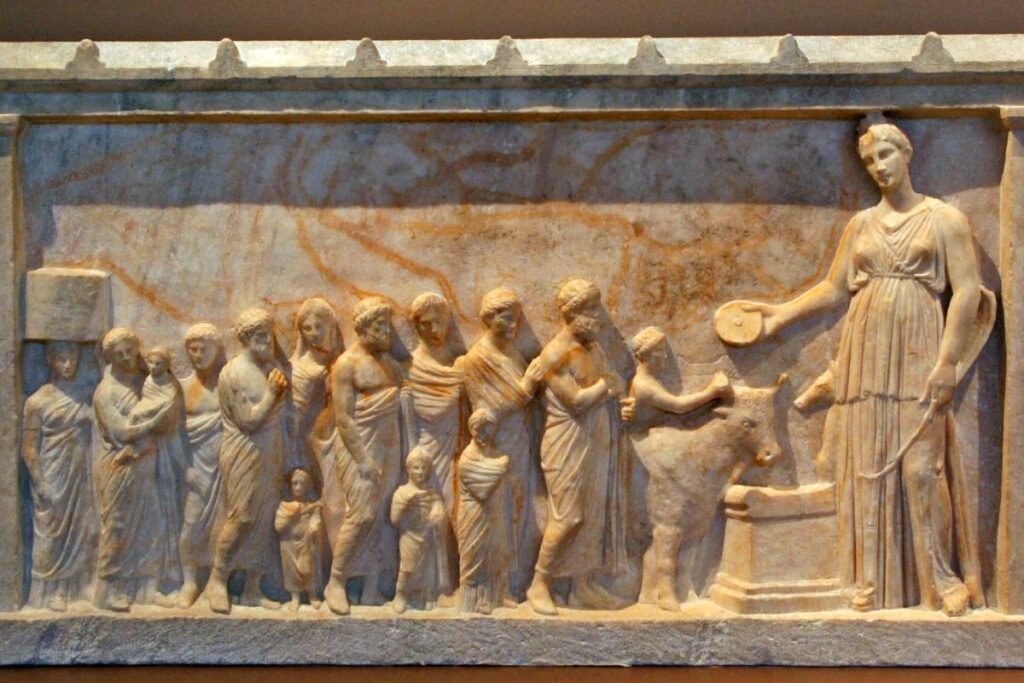
Artemis, daughter of Zeus and Leto and the twin sister of Apollo was the virgin goddess of wild animals, hunting, vegetation, and chastity.
In Vravrona, Artemis Brauronia was also the protectress of pregnant women approaching childbirth, women who had recently given birth, and children. For this reason, women dedicated their expected baby to her, and later also to their clothing.
The clothes of women who died in childbirth were dedicated to Iphigenia. But who was Iphigenia?
Iphigenia: Trojan War Sacrifice

According to Greek Mythology, during the Greek army preparations in Avlida city against Troy, the goddess Artemis demanded the sacrifice of Iphigenia to let the Mycenean fleet sail. Iphigenia was Agamemnon’s daughter, the Greek General of the whole army.
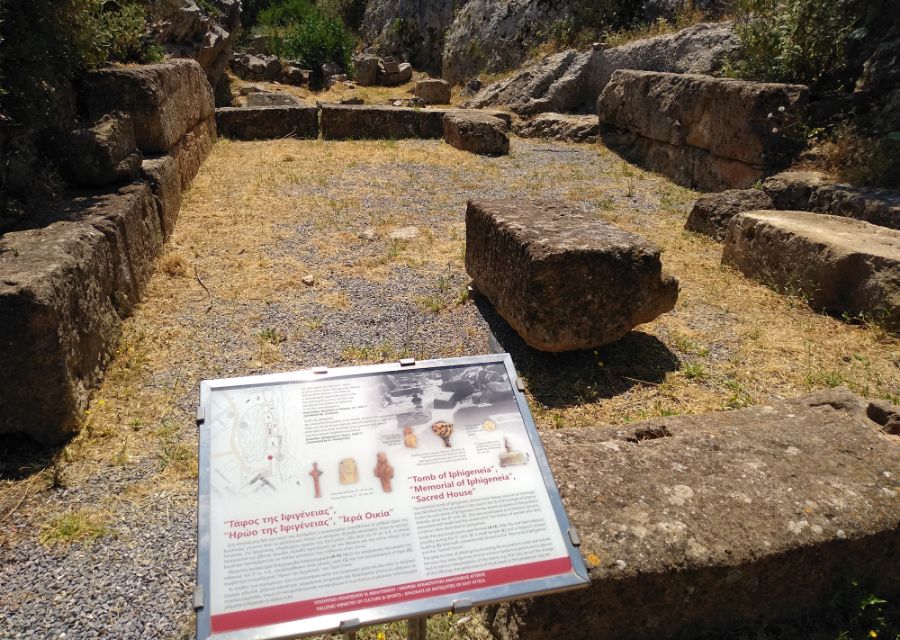
Agamemnon, torn between his love for his daughter and his responsibility as a general, lied to his wife that she should send Iphigenia from Mycenae to Aulis to marry her to Achilles.
When Achilles realized that he was used and that Iphigenia was going to be sacrificed, he was furious with Agamemnon.
However, a little before the actual sacrifice, Artemis decided to spare Iphigenia’s life, and according to Euripides, she became a priestess of Artemis.
Vravrona Archaeological Site | The Monuments

Artemis’ worship in Vravrona dates from the 8th century BC, and her sanctuary was built in the 6th century BCE. The Artemis Sanctuary stopped operating around the 3rd century. BCE, when it was buried in mud after heavy floods and the area was generally abandoned.
In heavy rain, the site might get slightly flooded today as well!
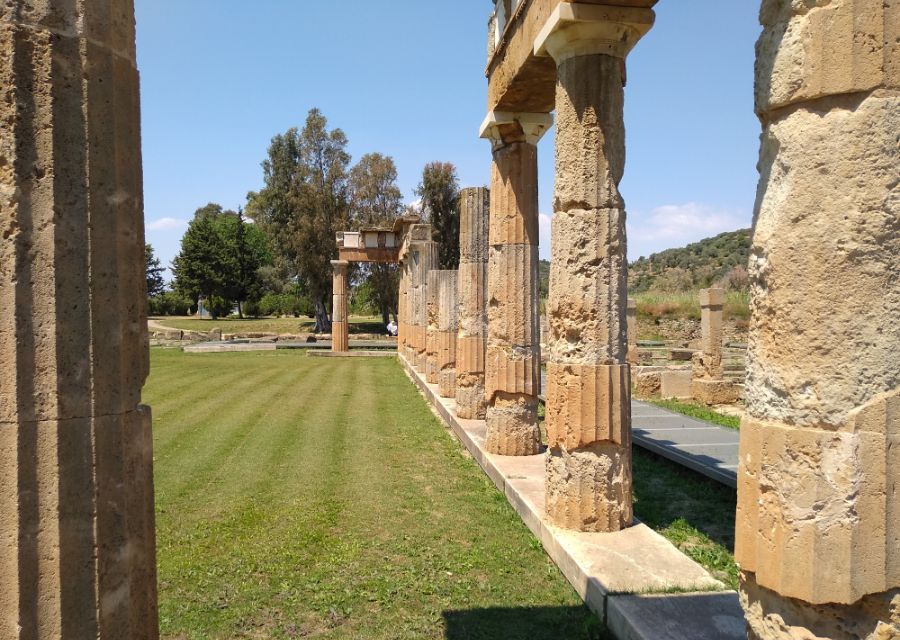
The most important ancient ruins that you can see today in Vravrona are:
- The big Doric stoa
- The Doric Temple of Artemis
- The temple or heroon of Iphigenia
- The sacred spring, the bridge over the Erasinos river
- The palaestra and the gymnasium.
Visit the Greek Orthodox Churches in the Sanctuary
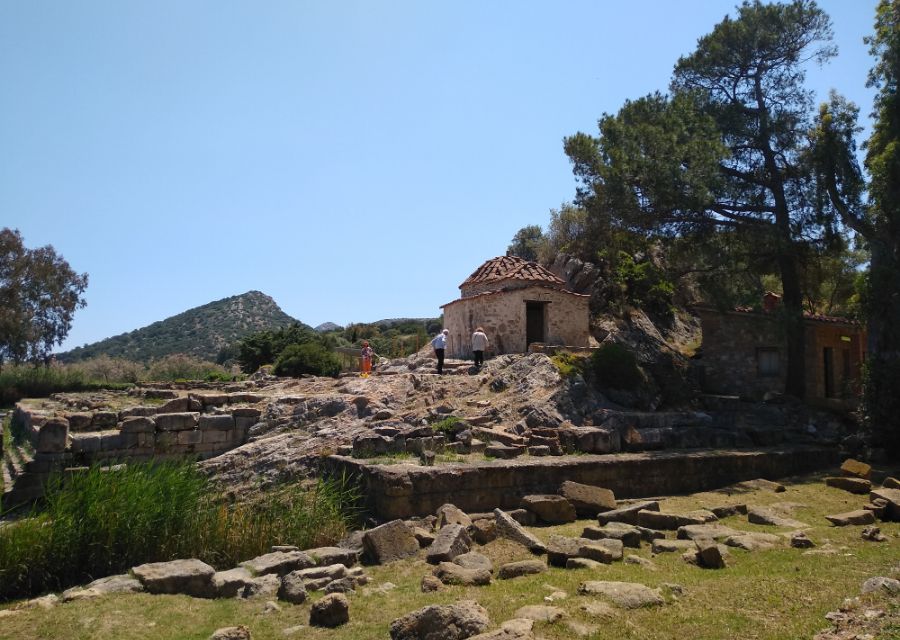
As you enter the site on your left side and a low hill, you will find the few remains of an ancient Christian basilica of the 5th century, and a smal,l lovely church dedicated to Saint Georgios from the 15th century.
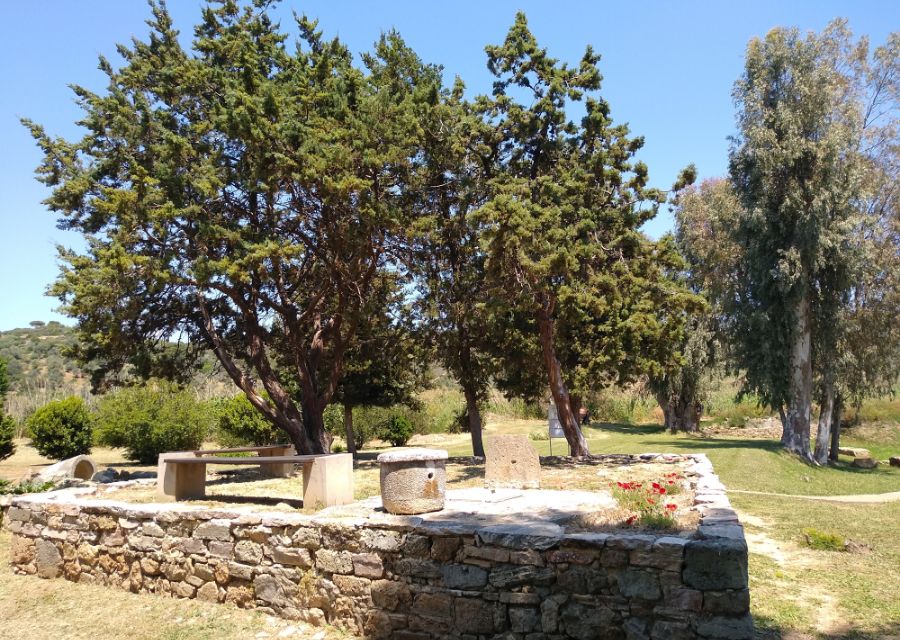

The church is completely renovated and in really lovely condition. You can circle the church and end up in the back at a small stream of water full of flowers. This is a nice place to take your camera out if you haven’t done it already and start making memories.
Vravrona Archaeological Museum
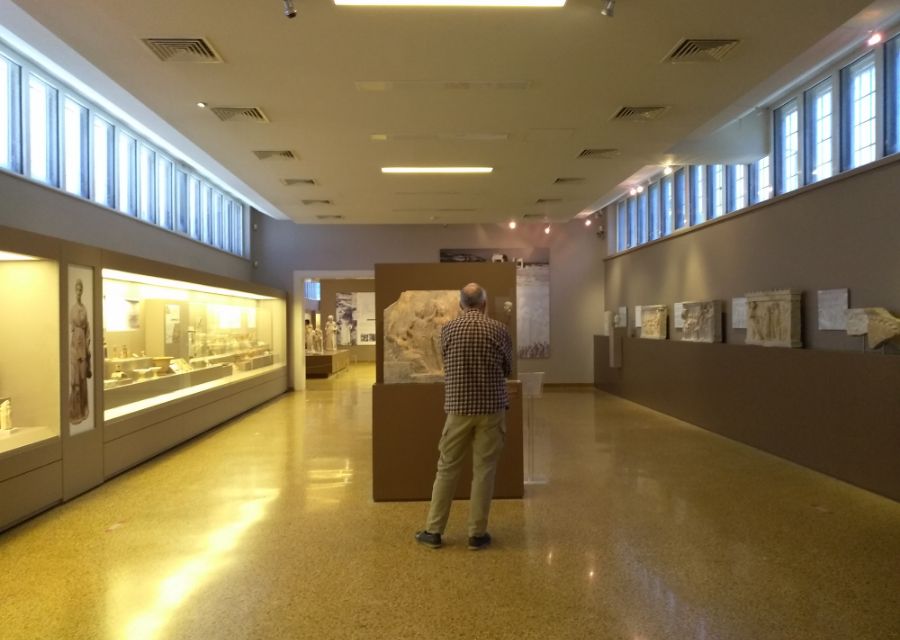
The museum is small but quite remarkable in the sense that it houses magnificent exhibits that were found not only in Vravrona but also in Anavissos, Perati, and other parts of Attica.
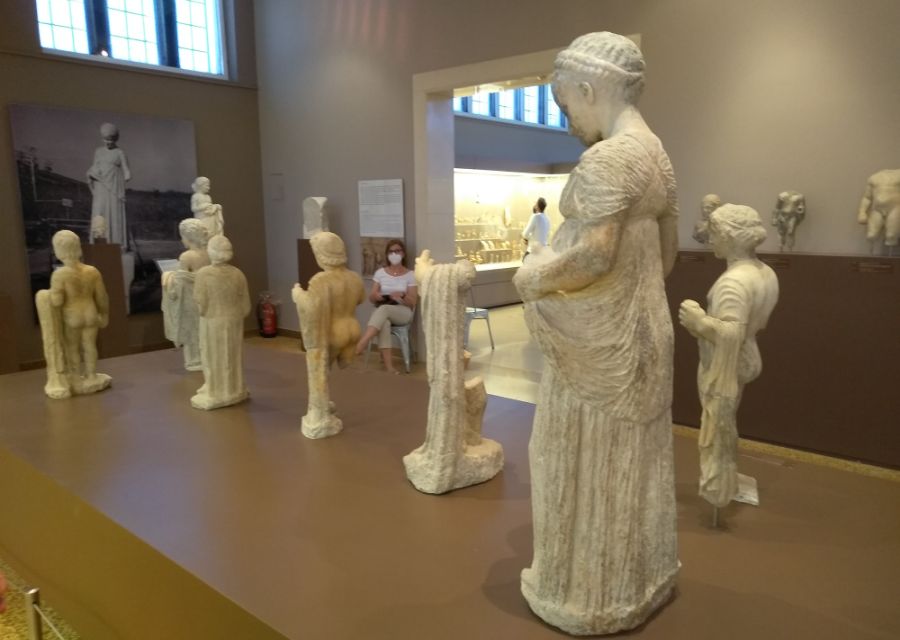
Among the most exquisite exhibits are the marble heads of girls, statuettes of sitting boys and their toys testify to how they spent their free time in ancient Athens.
Tips for Visiting Vravrona
How much is the Entrance Ticket?
The ticket between April and October is €6 and from November to March is €3.
What is the Time of Operation?
It is open every day between 8:30 am – 15:30, except Tuesdays when it remains closed.
Is Vravrona Accessible?
Yes, it is. There is flat access surrounding the monuments.

Is there a Shop inside Vravrona?
No, there is not.
How much time do I need for Vravrona?
You need at least an hour for both the site and the museum.
Can I drink or eat inside Vravrona?
You are not allowed to eat or drink inside any archaeological site in Greece; only water is allowed to be carried around. There is no café/restaurant inside the site.
Do I need cash, or do they accept credit cards?
You can pay either with cash or with a credit card at the entrance of the site. You can contact them at +30 22990 27020.
Hike Vravrona Bay

Vravrona is ideally located in a nearby wetland ecosystem and the Erasinos River, a valuable source of the wetland’s rich biodiversity.
Several species of fish, terrapins, snakes, eel, and frogs live in its waters, while its reedbeds are nesting sites for 176 local and migrating bird species.
The easiest way to hike the area is by starting from the Museum of Vravrona and walking either towards the coast and the Erasinos estuary or to the archaeological site and the main part of the wetland.

After the visit to the Archaeological Site of Vravrona and the adjacent wetland, you continue the dirt road by the sea towards Chamolia. At about 1.3 km, the dirt road becomes a trail that ends up in the small settlement of Nea Vravrona.
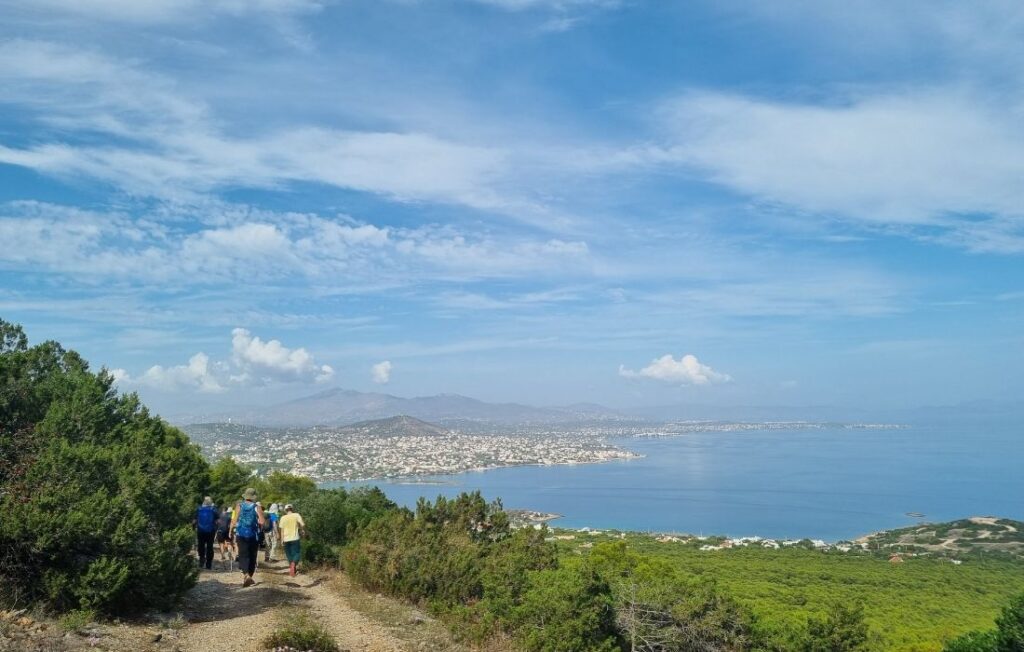
In Nea Vravrona, you walk for 1,5 km on the main road and you find Chamolia’s beach. If you walk the trail during an off-season period, it will be just you, the birds flying high, the odd brave swimmer, and the occasional car or bike passing you by. Blissfully quiet.
The total round-trip is 8 km, an easy level with only 100 m elevation gain if you visit the nearby hills right across the seaside.
Best Beaches in Vravrona
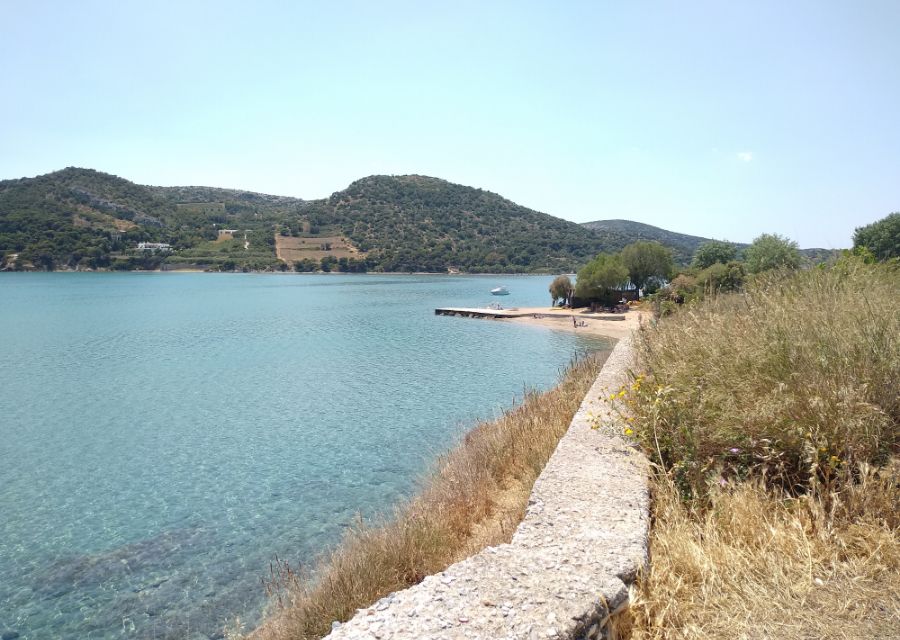
After our stroll to the archaeological site of Vravrona, sister Eleni and I drove the 2-3 km distance to the public Vravrona beach. This is a beautiful protected bay right where the Dolce Athens Attica Riviera Hotel is located.
Dolce is a fantastic hotel if you would like to stay near the Athens International Airport or take the ferry to the Greek islands. Across from the bay of Dolce is a tiny island called Vraona, on top of which there is a white-washed chapel and a micro-windmill.
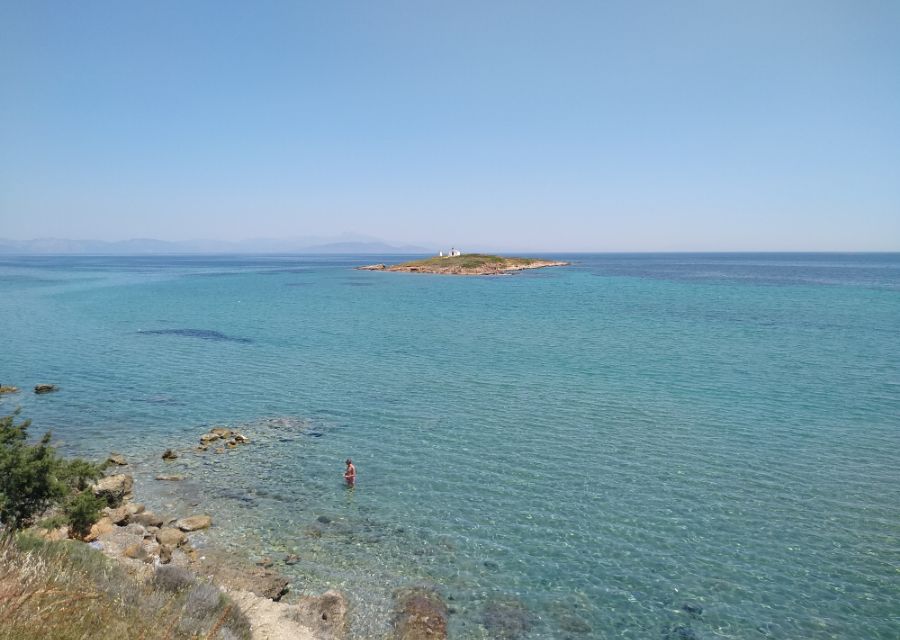
We enjoyed the sea there, it was crystal clear, with trees where we hid underneath, I don’t like to be under the sun for longer than 5 minutes.
Discover Porto Rafti

From Vravrona, you can take short trips around the area and do some sightseeing. Porto Rafti is a beautiful coastal resort in Attica, just over 6 km from Vravrona, with a sandy beach and many fish taverns.
The beach gets very popular in summer (too crowded at weekends), but still, it is a great place to visit even briefly.
Go to the Frankish Tower of Vravrona
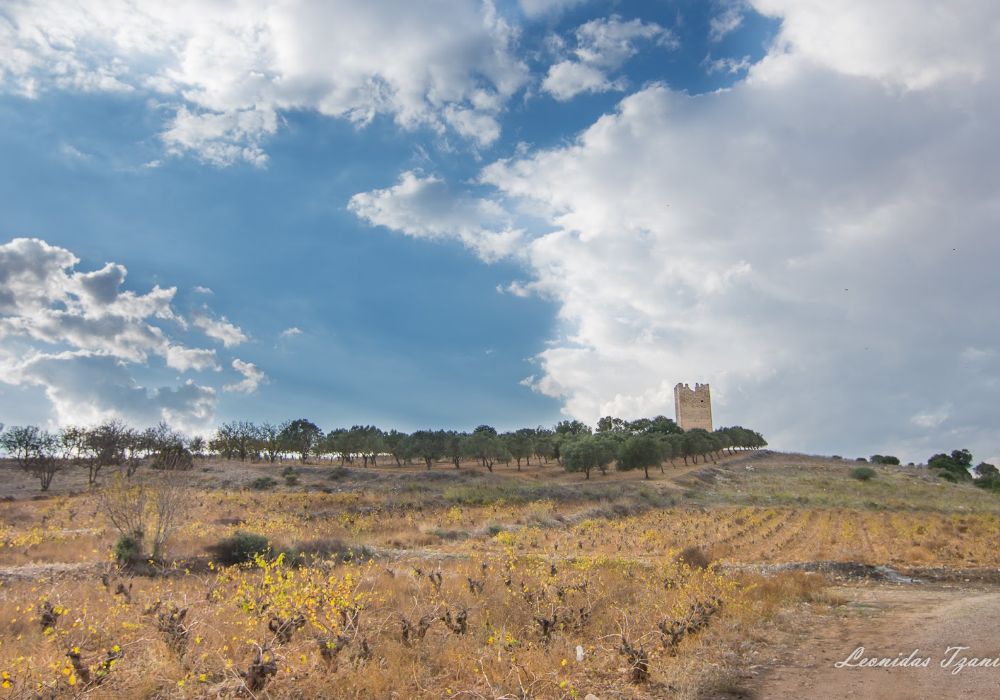
The Frankish tower is one of the five still-standing Attica towers that date from the 12th/13th century. It was built by the Franks in the period when the Burgundian family of De LaRoche was the ruler of the Duchy of Athens, in the 13th century.
15 minutes from Athens airport is Villa Vravrona Tower & Suites with garden and pool suites overlooking the Tower.
Explore the impressive Cave Koutouki Paiania

Cave Koutouki, which is at least 2 million years old, is the most imposing cave of Attica with a richness of stalactites and stalagmite formations. It can be found in the Paiania Athens area on the Hymettus mountain at 510 m height and it is a half an hour’s drive from Vravrona Tower. Paiania was the birthplace of the philosopher Socrates.
The cave was first discovered in 1926 when a wandering sheep fell into the cave from a ground opening. The shepherd had to ask for help to bring the adventurous sheep back to the ground, and by digging for the entrance, the imposing cave was first discovered.
According to the local stories, the sheep rescue digging team was astonished by the spectacular cave formations.
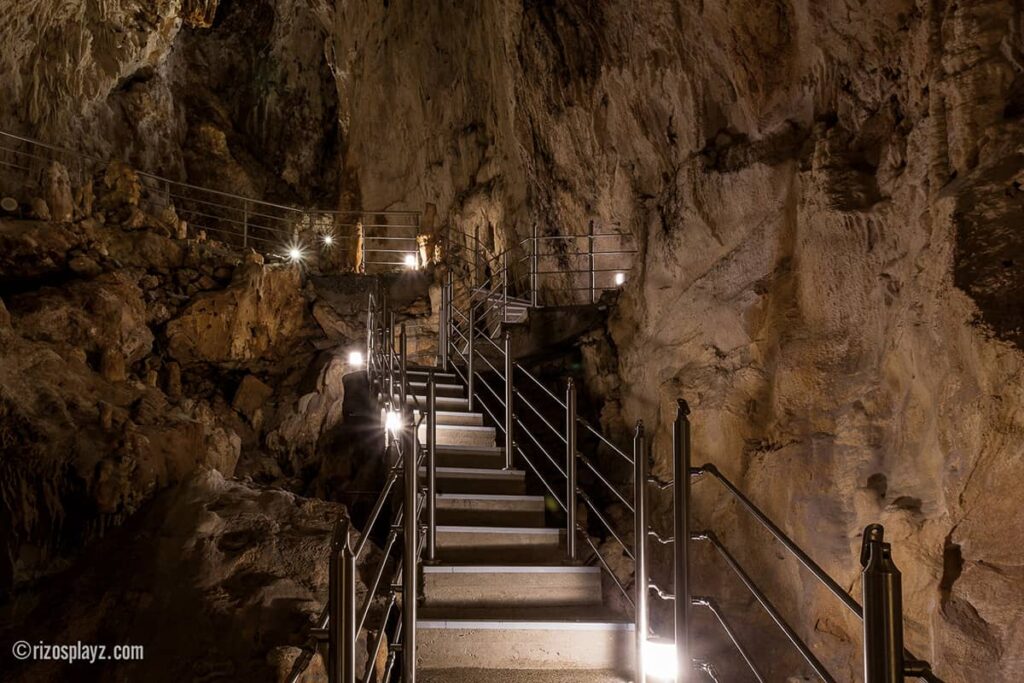
The cave features a single huge central chamber, measuring 60 x 60 m., and a passageway of around 350 m. The temperature inside is around 17C.
Today the visit is made from an artificial entrance that was built to facilitate access. It is open Monday to Sunday 8.00-15.00. Guided tours from 8.30 every hour until 14:30. Entrance ticket €4.
How to get to the cave: I suggest you rent a car as the public bus will leave you 4.5 km away from the cave.
Other Popular Trips in Attica

- The Sounion Cape with the Temple of Poseidon and watch the stunning sunset.
- The Marathon Lake, the Dam, and the archaeological site of Marathon.
- The Schinias beach and wetland, walk under its pine forest and swim on its endless sandy beach. Schinas is one of my childhood holiday beaches and I have a lot of fond memories of the area.
FAQ about Vravrona
Where Best to Stay in Vravrona
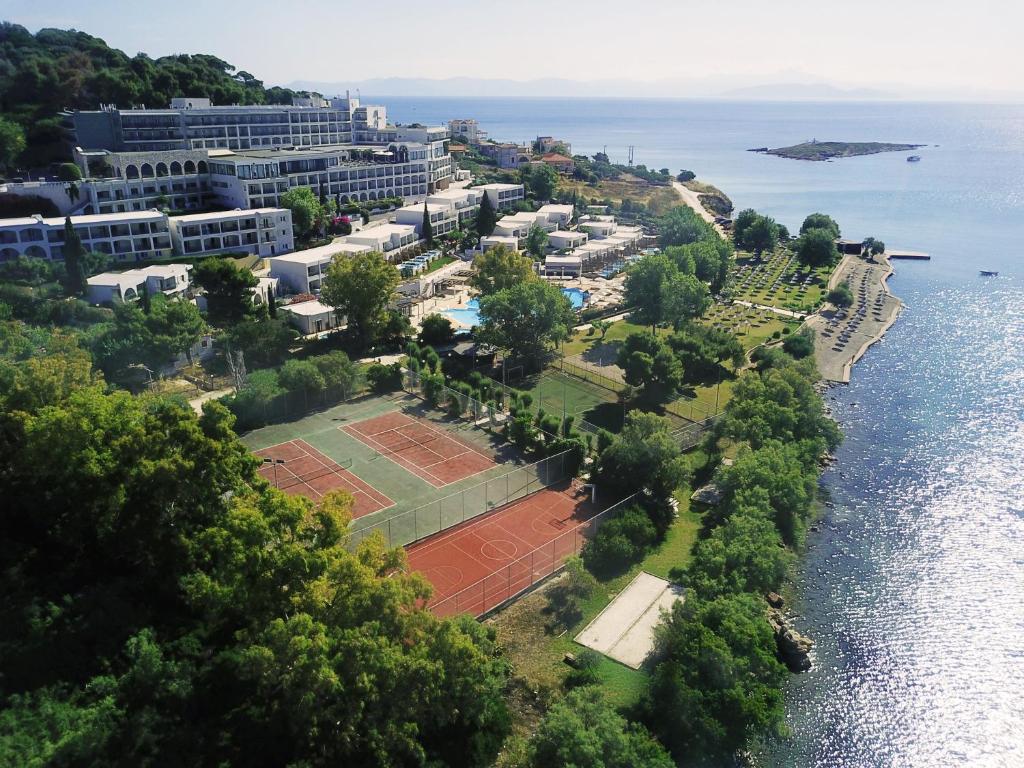
The best hotel in Vravrona is the Dolce Athens Attica Riviera. If you prefer apartments, check out the seafront Vravrona Beach Apartments, located near Athens airport and restaurants.
FAB PROPERTIES
Check out availability and prices for the best hotels and apartments in Greece on Booking.
How to Get to Vravrona: Day trip from Athens
Vravrona is only 38 km from Athens and it is very doable to go there if you only have a day. You can rent a car and explore the area by yourself or you can book a private tour and swim in Vravrona.
Where is Vravrona in Athens?
The Vravrona Archaeological Site (also known as Brauron, Brauronia) is located in eastern Attika. Vravrona is the natural continuation of the Athens Riviera set between the seaside resort of Artemida and Porto Rafti. Vravrona is a great base if you are taking the ferries (Check FerryScanner for routes from Rafina port to Andros or Mykonos).
Were there any festivals to celebrate the goddess Artemis?
Yes, the festival of Artemis Brauronia and the festival of Artemis Orthia.
Where exactly is the Shrine of Artemis in the Acropolis?
The ruins of the Sanctuary of Artemis Brauronia are behind the Propylaea in the Acropolis Hill. Other important sanctuaries of Ancient Greece are Delos, Delphi, Olympia, Bassae, Eleusis, Epidaurus, and many more, see map below.
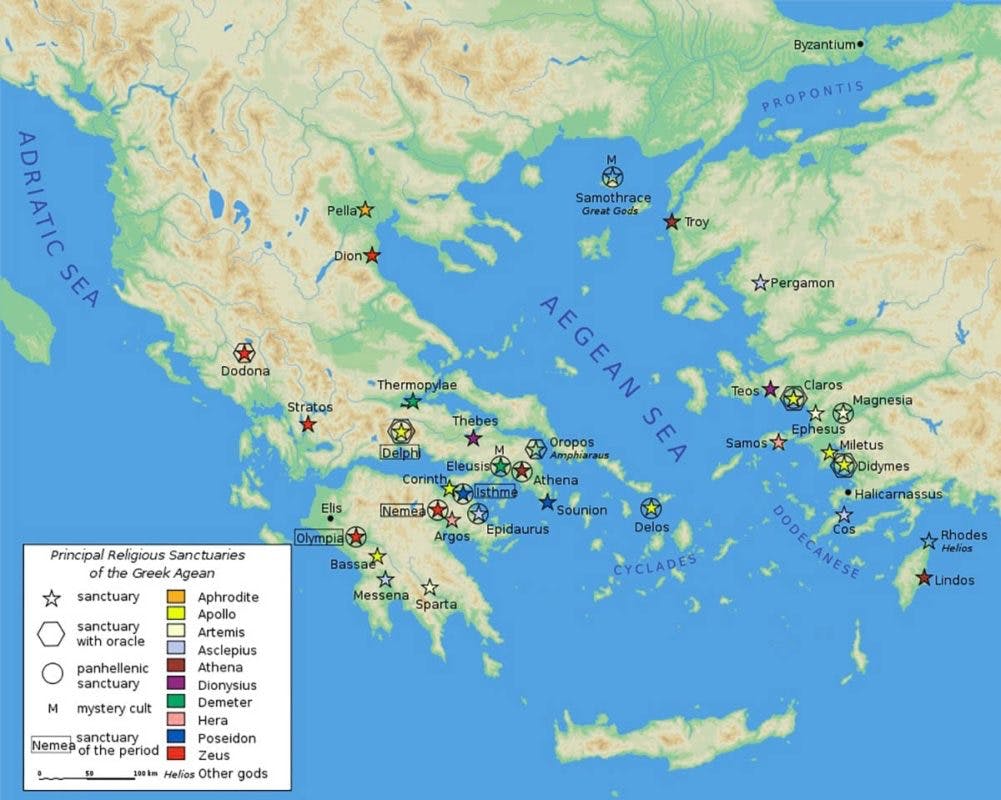
Athens Quick Reference
Join my FB Group & Subscribe to My YouTube & TikTok Channels!
For more travel to Greece tips and beautiful destinations in the Greek islands please join my FREE Facebook Group or SUBSCRIBE to my YouTube & TikTok channels for amazing videos of Greece! Until then happy and safe travels, Evgenia.
My Most Popular Posts
- Greece Packing List – What to pack for a 10-day trip to Greece
- First Time to Greece – Most Important FAQ
- Athens Hotels Near Acropolis
- Athens Apartments Near Acropolis
- Best Athens Beach Hotels
Essential Travel Resources for Greece
- ‘Hello’ and ‘Thank You’ in Greek: “Ya sou” and “Efharisto”
- Booking.com: I use Booking.com mostly for Europe.
- All-Inclusive Resorts in Greece
- FerryScanner to book ferries to the Greek Islands
- Rent an Affordable Car in Greece
- Athens Metro Website (timetables and ticket info)
- Trains (Hellenic Train)
- Public Buses KTEL
- Get Your Guide: For all your day or multi-day tours and city guide needs, I use Get Your Guide
- Emergency Numbers Anywhere in Greece: AMBULANCE 166 – FIRE 199 – POLICE 100– EMERGENCY NUMBER 112

Not very far from Rafina where I’ve been several times for ferries to Andros. And I had no idea there was so much to do around there!
Hi Fred and thanks for the comment! Indeed Rafina is only 8 km far and I totally agree with you, Vravrona is a hidden gem.
Absolutely correct spot on. I am Greek and my favorite place in the world is still Vravrona!
Thank you, Christina, I also love Vravrona!